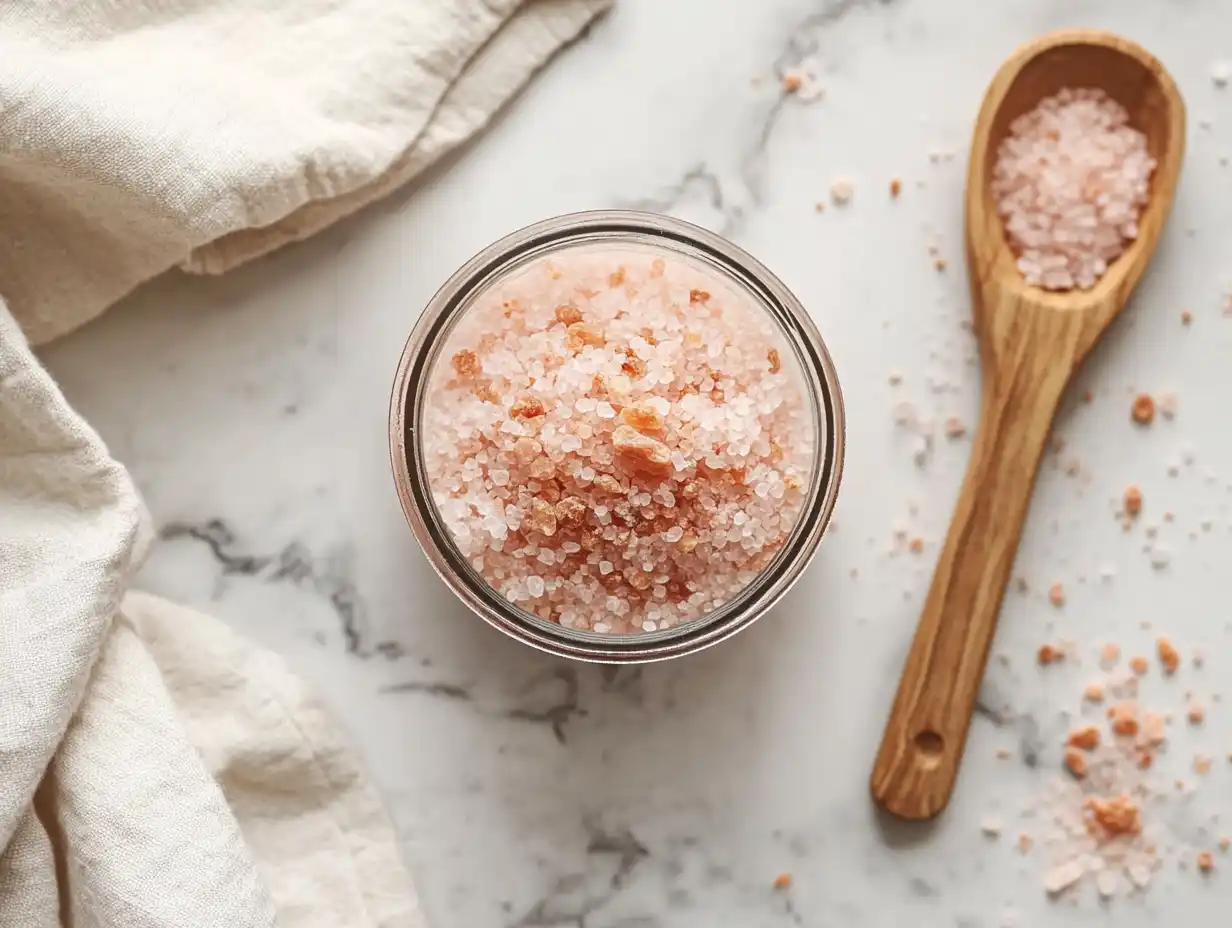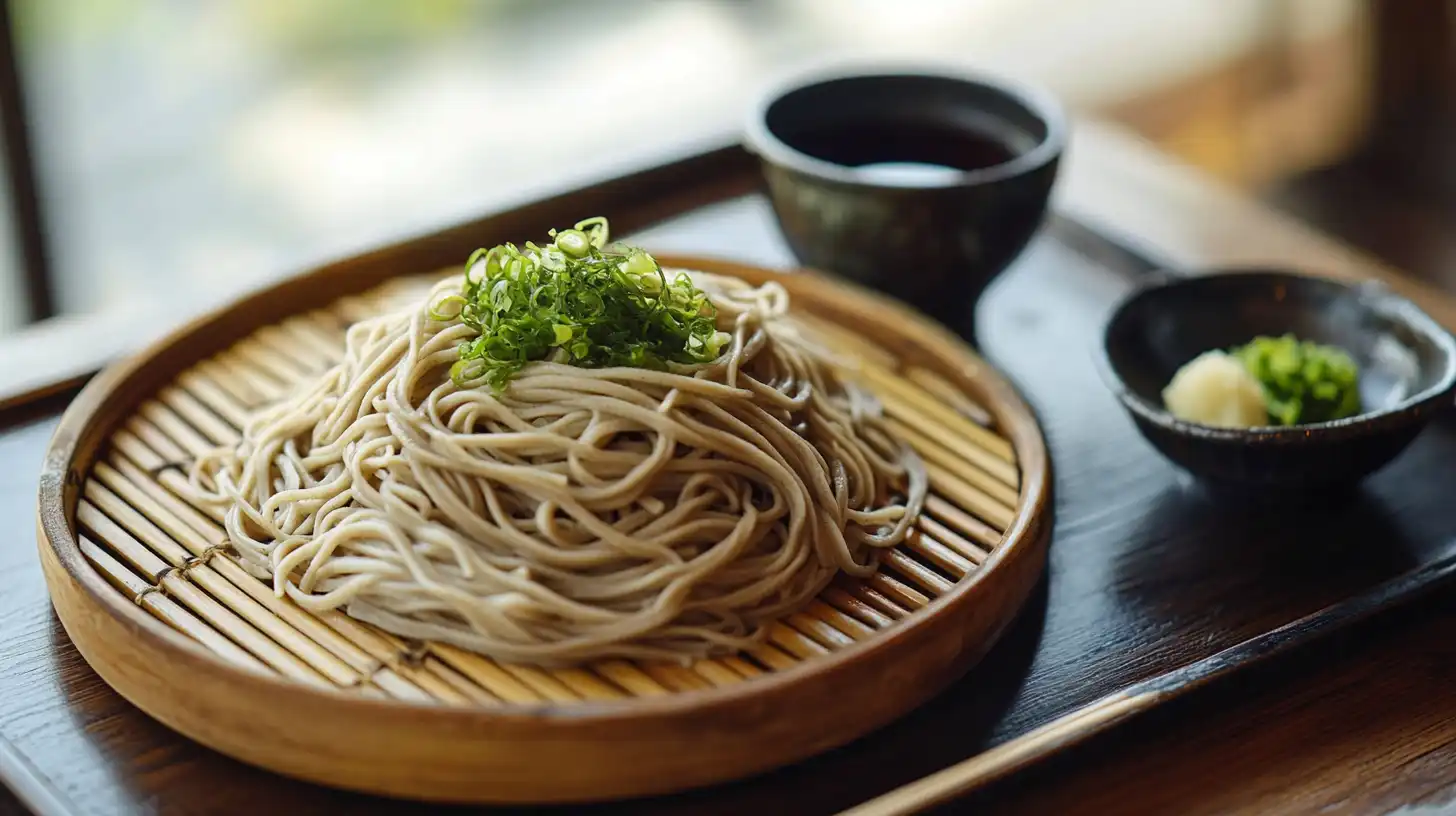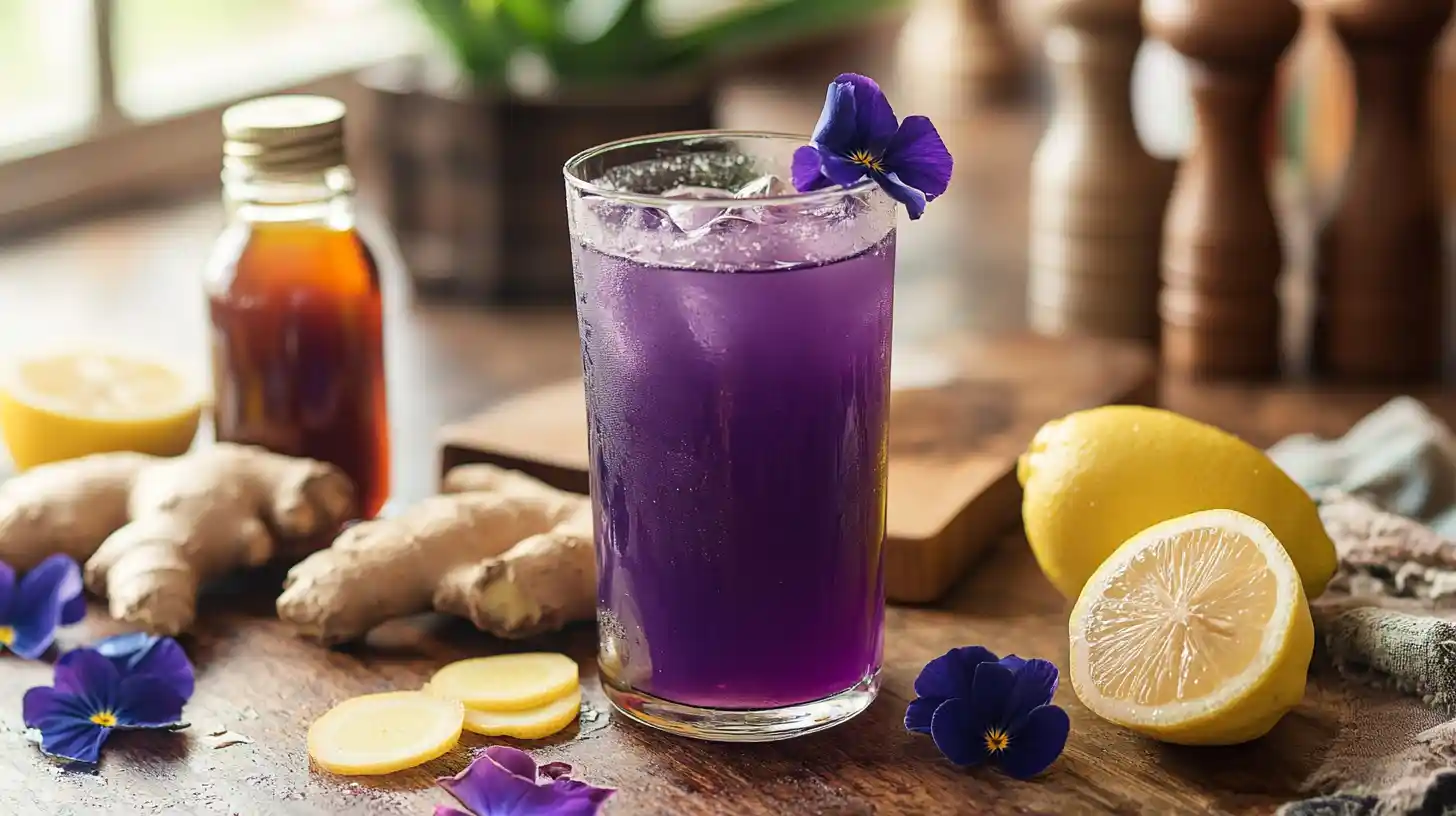Japanese pink salt recipe—that’s exactly what I typed into my search bar one night after watching a TikTok featuring a home cook sprinkling rosy, flaky salt over grilled tofu. The sizzle, the steam, the color—it was pure food magic. I couldn’t stop thinking about it.
That same night, I dove into my pantry. I grabbed Himalayan pink salt, a crinkled sheet of kombu, and some leftover yuzu zest from a salad shoot. The first version of my Japanese pink salt recipe was rough but promising. I posted the attempt anyway. To my surprise, it blew up overnight. DMs poured in. Everyone wanted the exact recipe and asked, “Is this that viral Japanese salt trick?”
Spoiler: it’s even better. What started as an experiment has become my go-to flavor bomb—and now, I’m sharing the full Japanese pink salt recipe with you.
Curious about salt trends that actually work? Don’t miss my honest review of the pink salt weight loss recipe I tested, or the viral blue salt trick for stamina. They each have their place—but this recipe’s about flavor first.
Table of Contents
Why You’ll Crave This Salt Again and Again
What makes this Japanese pink salt recipe different is the way it layers mineral depth, citrus brightness, and umami heat. Himalayan pink salt starts the blend with purity and crunch. Japanese ingredients like powdered kombu and dried yuzu peel create bold depth. A pinch of shichimi togarashi? That’s where the fire kicks in.
This takes less than 10 minutes and works magic on grilled veggies, popcorn, fish, even sliced apples. Make a big batch. You’ll want to keep it in reach.
Part 2: Inside the Japanese Pink Salt Recipe – Ingredients That Do More
What You Need for the Perfect Balance
When I first created this Japanese pink salt recipe, I started with simplicity. But it was the layering of each ingredient that turned it into something people genuinely crave. Here’s exactly what goes into it and why:
| Ingredient | Why It Matters |
|---|---|
| Himalayan pink salt | Delivers over 80 minerals, a subtle saltiness, and gorgeous color |
| Dried yuzu zest | Adds citrus brightness and authentic Japanese aroma |
| Powdered kombu | Packs umami and complexity—think ocean-salty richness |
| Shichimi togarashi | A touch of heat, plus sesame and orange peel for depth |
| Optional: Matcha | Just a pinch adds bitterness and color (trust me—it works) |
You can get most of these ingredients at Japanese specialty stores or online. If you can’t find yuzu, lemon or orange zest is a decent swap. Kombu powder can be made by blitzing dried sheets in a spice grinder.
Want something milder? Dial back the togarashi. Need more heat? Add chili flakes or sansho pepper. The beauty of this Japanese pink salt recipe is that it flexes to your taste.

Japanese Pink Salt Recipe
Equipment
Ingredients
Instructions
Notes
Storage, Shelf Life & Presentation Tips
Store your finished blend in a small airtight jar—preferably glass—to keep moisture out. It’ll stay flavorful for 2–3 months if kept away from heat and light.
Pro tip: layer the salt mix in a clear mini jar for a gift that looks as pretty as it tastes. I label mine “Japanese Pink Dust” with a handwritten tag. It always gets a reaction.
Craving more bold but easy flavor bombs? You might love my easy Japanese curry or this flavor-packed gyudon beef bowl. Both pair beautifully with a sprinkle of this salt on top before serving.

Part 3: How to Make Japanese Pink Salt Recipe at Home
Step-by-Step: From Pantry to Power Seasoning
Making this Japanese pink salt recipe takes less than 10 minutes, but every step matters for flavor and texture. Here’s how I make mine:
Step 1: Prep Your Dry Ingredients
Measure the following into a bowl:
- ¼ cup Himalayan pink salt
- 1 tsp powdered kombu
- ½ tsp dried yuzu zest (or orange zest if subbing)
- ¼ tsp shichimi togarashi

Step 2: Blend It Right
Stir gently using a ceramic or wooden spoon. You don’t want to crush the salt flakes—just mix evenly. If the zest clumps, break it up with your fingers.

Step 3: Taste, Tweak, Transfer
Dip a cucumber slice or rice cracker into the mix. Need more heat? Add a pinch more togarashi. Too bold? Sprinkle in a bit more pink salt to mellow it.

Ways to Use This Salt Like a Pro
Once you’ve finished the blend, it’s time to get creative. Use it as:
- A finishing salt for grilled salmon
- A rim salt for margaritas with a yuzu twist
- A crunchy topper for soft-boiled eggs
- A killer secret for crispy rice squares (yes, really)
- A flavor upgrade for your next okonomiyaki
You’ll want to put this Japanese pink salt on everything once you try it.
Japanese Pink Salt FAQs – What Everyone’s Asking
What is the 4 ingredient pink salt trick?
The “4 ingredient pink salt trick” refers to a simple seasoning blend using Himalayan pink salt, lemon or citrus zest, seaweed powder (like kombu), and chili flakes or spice. It’s meant to boost flavor and, depending on who’s sharing it, even metabolism or digestion.
My version—this exact Japanese pink salt recipe—uses 4 tablespoons pink salt, 1 tsp kombu powder, ½ tsp yuzu zest, and ¼ tsp togarashi. It follows the same principle but adds Japanese depth and nuance. It’s delicious, clean, and easy to make at home.
If you’re curious about how it compares to wellness blends, check out my test of the pink salt weight loss recipe that went viral. Spoiler: it’s not all hype, but not all flavor either.
Does the pink salt diet actually work?
It depends on what “work” means for you. Some believe pink salt helps hydrate cells, support digestion, or balance electrolytes. But in reality, there’s no scientific evidence showing that pink salt alone causes weight loss.
That said, it’s a smart low-additive alternative to table salt—and when used like in this Japanese pink salt recipe, it turns clean eating into something craveable. Want to go deeper? I explored the details in the salt trick for stamina and energy, where I explain how mineral salts can enhance flavor and motivation (but not replace good habits).
Can I drink pink Himalayan salt water every day?
It’s called “sole water,” and some do drink it daily to “balance minerals.” I’ve tried it. If you use high-quality pink salt in small amounts, it’s generally safe for most—but always check with your doctor if you’re on a low-sodium plan.
Personally? I’d rather eat my salt. This Japanese pink salt recipe gives you the same minerals—plus flavor, crunch, and flexibility. Sprinkle it on cucumbers or eggs and you’ll enjoy your minerals a lot more than from a glass of brine.
What is the Japanese salt trick?
Online, the term often refers to adding sea salt and warm water before meals to curb appetite. But in Japan, the “salt trick” is also culinary—it’s about using flavored salts (like yuzu salt or kombu salt) to elevate simple foods.
That’s the inspiration behind this Japanese pink salt recipe. By blending pink Himalayan salt with Japanese flavors, you get a balanced, craveable seasoning that adds depth without needing sauces or sugar.
This trick isn’t about dieting—it’s about taste. And once you try it on soft-boiled eggs or watermelon, you’ll see what I mean.
Want to see how I use this Japanese pink salt recipe in real time?
👉 Follow me on my Facebook Page for behind-the-scenes kitchen tips, flavor experiments, and salt hacks I don’t post anywhere else.




